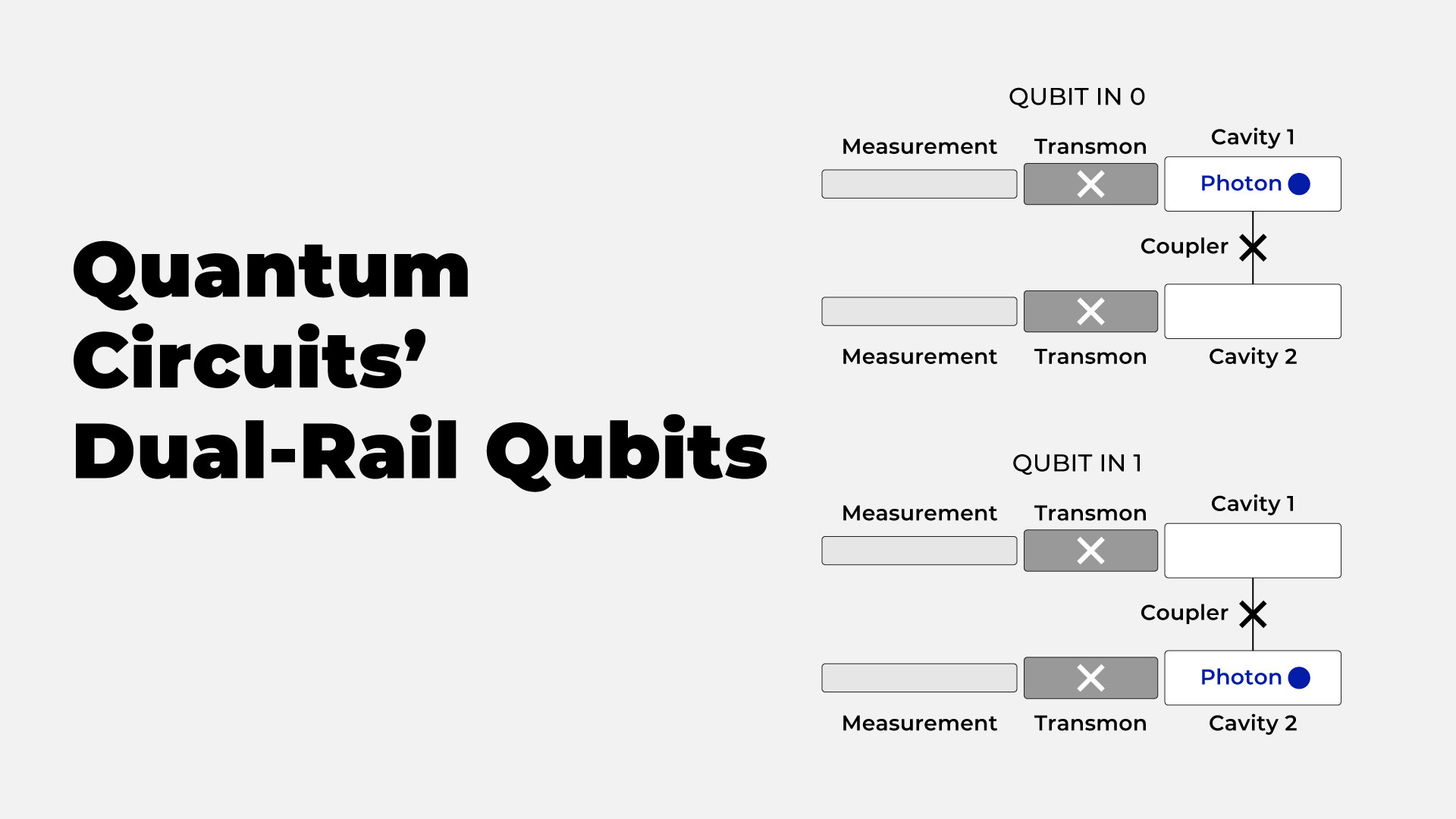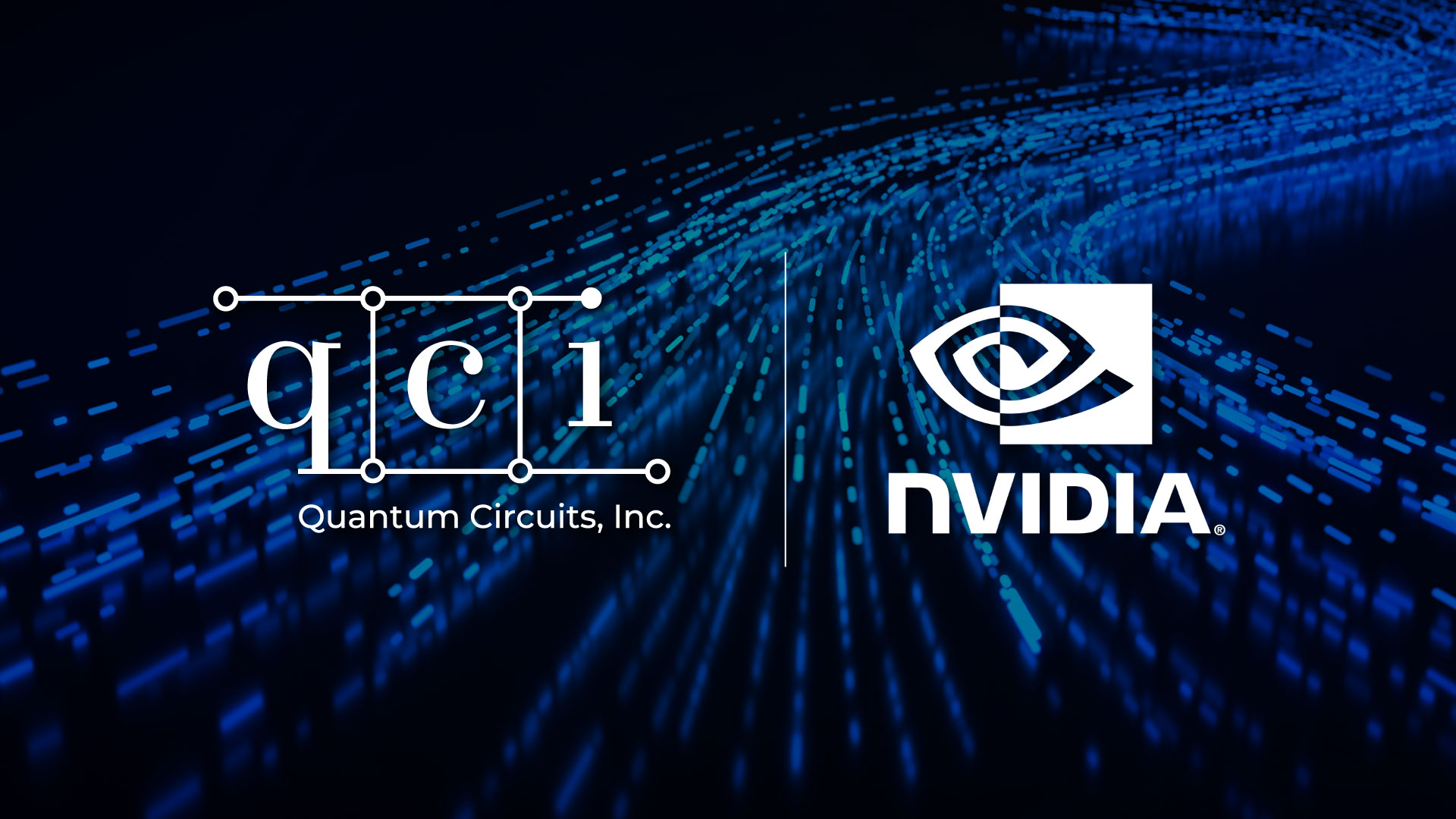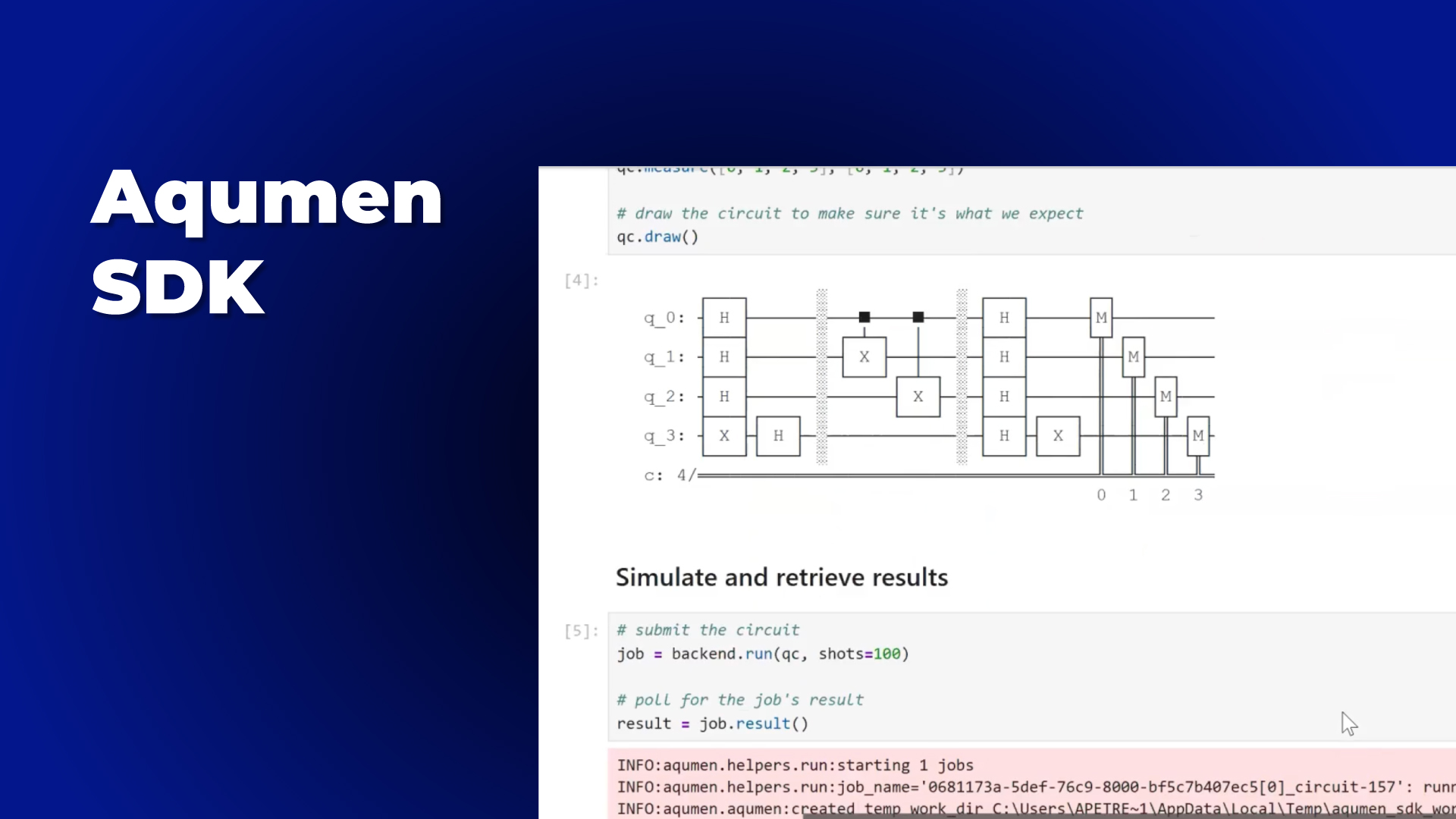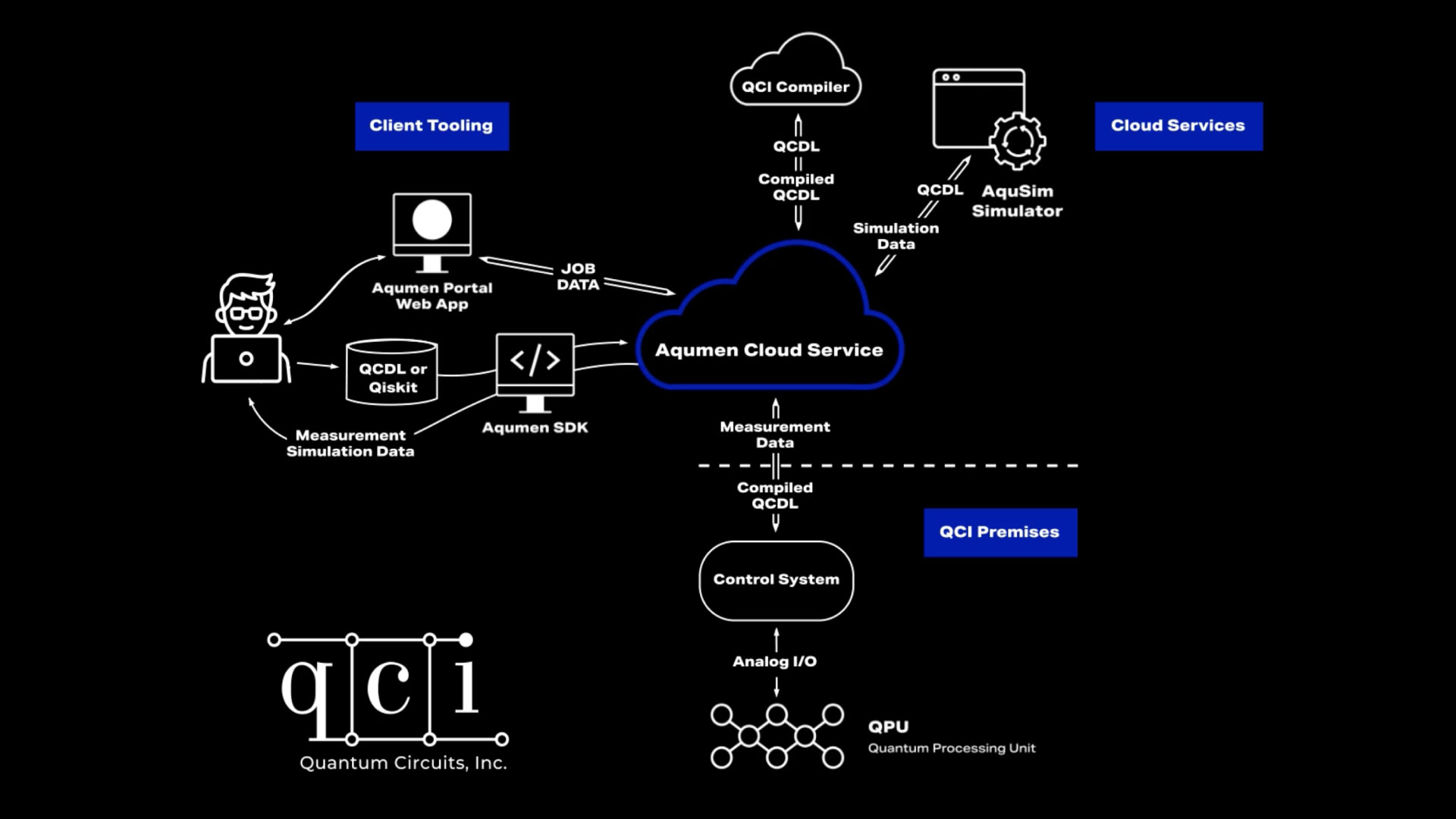QCI’s quantum computing architecture leverages the powerful properties of superconducting Dual Resonator Qubits (DRQs). These qubits are “logical” subsystems, meaning they are comprised of several physical elements, whose operation is orchestrated by our software and control system to realize high fidelity for both quantum gates and State Preparation and Measurement (SPAM).
We designed DRQs with one thing in mind: enhancing the fidelity of quantum applications with error detection and correction.
Despite their capabilities and high performance, DRQs boast a deceptively straightforward design consisting of (see figure):
- Two superconducting resonators (aka cavities) connected by a so-called “coupler.”
- A superconducting qubit (transmon) connected to one of the resonators, which in turn is itself connected to a measurement device.
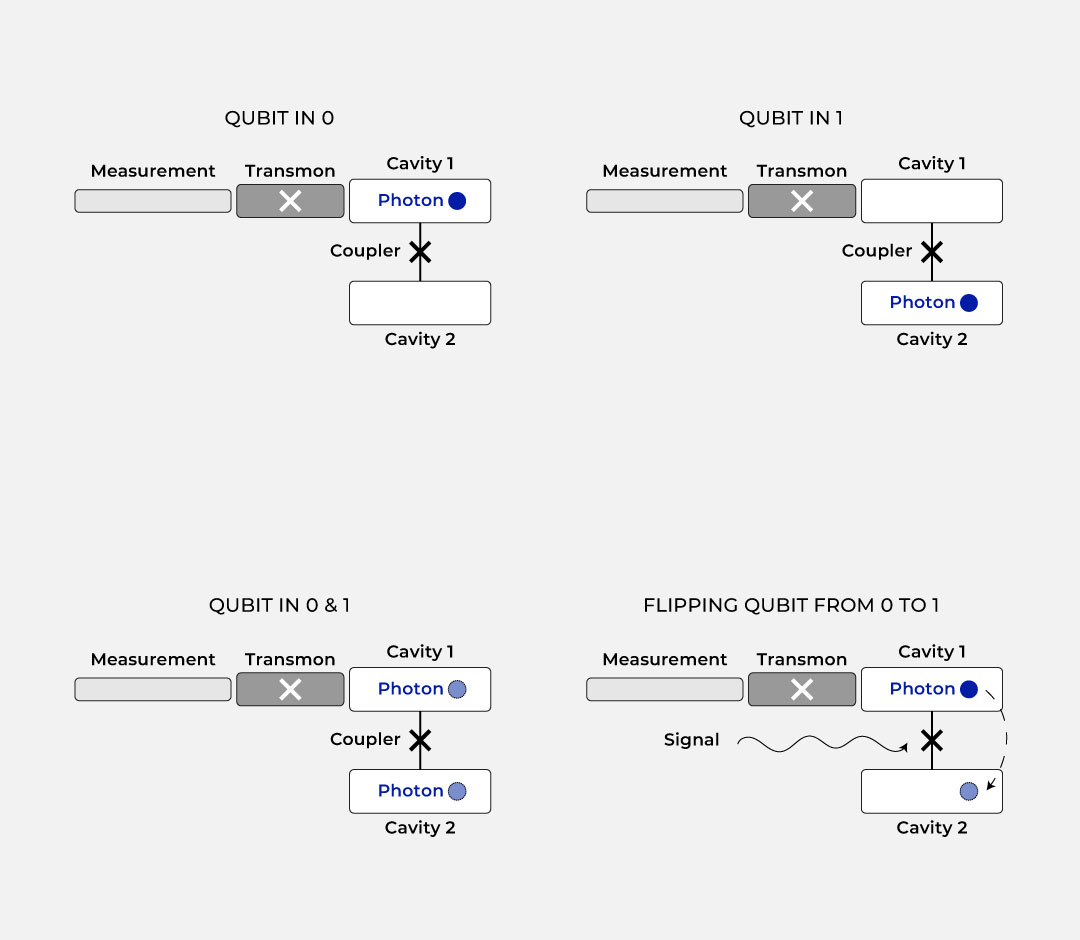
The resonators are the workhorse. They encode the logical information. If there is one microwave photon in the top resonator, the DRQ is in the state 0. Conversely, if there is one microwave photon in the bottom resonator, the DRQ is in the state 1.
…resonators are the workhorse.
Every quantum computer requires a universal gate set, and for DRQs this is achieved by the following operations:
- Single qubit operations are simple: apply signals to the coupler that separates the two resonators, turning on what’s called a beam-splitter. A bit flip equates to a full transfer of a photon from top to bottom (or vice-versa), and superpositions are created by applying modified versions of a similar beam-splitter signal.
- Measurements are performed by entangling the transmon qubit with the photons in the resonators and then measuring the transmon.
- Two qubit gates are realized by entangling the nearest resonators of neighboring DRQs and applying coordinated control signals, leveraging the transmon ancilla when needed.
The above design is particularly attractive because the most common error that a DRQ experiences is, by far, single photon loss rather than bit flips or phase flips. Indeed, a bit flip means losing a photon in one resonator and gaining one in another, a process that is virtually negligible on the timescales of superconducting operations. Phase flips, although more common, are still rare in DRQs as well given our high resonator coherence times.
This signature form of decoherence, photon loss, leads to so-called “erasure” errors. These are not as damaging as the name might suggest. In fact, as we’ll talk about, the dominance of erasure errors over bit and phase flips allows us to use post-processing to substantially boost algorithm performance and reduce the overhead required for successful quantum error correction.
This leads us squarely to the implications of erasures on enhancing application fidelity through error detection and correction.
Imagine you run your algorithm and throughout you intersperse “erasure checks” to see if your DRQs have undergone any erasure errors. At the end of the algorithm, if you keep only the data where you didn’t measure any erasure errors during your checks, you’re much more likely to obtain a high-quality result.
This post-processing technique, known as post-selection, is very powerful and boosts fidelity considerably for near-term applications that run with QCI’s DRQs. With this capability in-hand, systems with large numbers of DRQs can run high-fidelity, error-detected quantum applications out-of-the-box.
It turns out that DRQs are specifically designed for erasure checks to be efficiently performed without disturbing the logical quantum bit of information encoded within them. In this sense, tracking photon loss is hardware-native to QCI’s platform. Indeed, given their comparative rarity, bit flips and phase flips don’t even need to be tracked at all.
Erasure checks are the linchpin of QCI’s approach to scalable error correction, as well. Our colleagues at Yale (Shruti Puri and Steve Girvin, among others), have shown that it is much easier to implement error correction when erasure errors are the dominant source of loss in the system, rather than bit or phase flips.
Erasure checks are the linchpin of QCI’s approach…
A challenge with conventional error correction codes is achieving sufficient performance to realize an actual benefit in suppressing errors. One must first exceed a certain minimum level of hardware performance – called the “threshold.” With our DRQ approach, this task is made easier in two ways: the first is that the threshold below which error correction starts to work in your favor is higher than in other, conventional architectures, and the second is that typical codes can correct twice as many erasures as ordinary errors!
To make a somewhat playful analogy, imagine a game of limbo. It’s easier if the bar is higher to make it to the other side and succeed. Why break your back and risk falling when the bar is too low?
So, in addition to having better near-term performance, the idea of the DRQs and erasure detection is that it simplifies the task of building higher-order logical qubits that are even more robust to errors.
In summary, Quantum Circuits’ DRQs are perfectly tailored for a powerful approach to high-fidelity quantum applications on large DRQ-based systems in the near-term and quantum error correction with conventional codes – but with a twist. The twist is that erasure errors now the main sources of error. Bit flips and phase flips are secondary sources of error. This makes scaling and error correction easier and accelerates the path to fault-tolerant and powerful machines.
For more details…
For a more detailed discussion, please see the following two publications that will take you on a deep dive of the physics behind the above introduction. The first is by Teoh et. al. from the Schoelkopf lab at Yale University: Dual-rail encoding with superconducting cavities. The second is led by the QCI team.
Our co-founder Rob Schoelkopf gave a great talk on the subject at the 2023 Bolder Boulder Quantum conference that reinforces many of these concepts. Please visit this post to watch.
